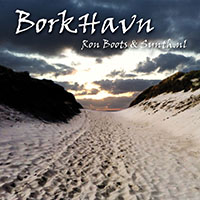 Like I said in the last part it was time for some testing. I did a visual inspection of all the boards and could not find anything that seemed wrong. The only thing is that there was an error found on the output PCB. Once of the Capacitors was actually wrong on both the PCB and the schematics. So before testing I decided to desolder it and turn it around. After that I attach the power supply to my lab power supply and applied 12V to it. The nice thing about a lab power supply is that you can limit the current it gives so I slowly turned up the current and the power supply lit up and all voltage led were OK. After that I measured all the voltages and everything was fine :) No magic smoke this time :)
Like I said in the last part it was time for some testing. I did a visual inspection of all the boards and could not find anything that seemed wrong. The only thing is that there was an error found on the output PCB. Once of the Capacitors was actually wrong on both the PCB and the schematics. So before testing I decided to desolder it and turn it around. After that I attach the power supply to my lab power supply and applied 12V to it. The nice thing about a lab power supply is that you can limit the current it gives so I slowly turned up the current and the power supply lit up and all voltage led were OK. After that I measured all the voltages and everything was fine :) No magic smoke this time :)

After this I put the power supply board in the main board. First without the ICs as you can see in the picture on the right. Main goal here is to see if there are no shorts in the soldering or anything. It is very important to look for the right slot for the Power Supply since it is exactly the same connector as the slots for the voice PCBs, but they are not interchangeable. Also you have to watch the orientation of the boards. So my main board was also OK. After this I inserted all the ICs and did the same test. And I could see on my lab power supply it drew more current but everything still looked OK. The only problem is you don't see anything happening yet on the board. There are no leds or anything to indicate it is working. So more testing is needed for that. After this I also inserted all the voice boards without ICs to also see if there was no shorts on these PCBs. Again no problems so far. Still always a scary moment to be honest powering up self soldered PCBs for the first time. Even after all these years of soldering.

After this I did another modification on all the voice boards. The advise was to solder two 1 mega-ohm resistors on the backside of the voice boards. It has something to do with the glide function and making it more like the behavior on the original CS-80. You have to be very careful here you solder them to the right pins of course which is a bit more difficult to see from the back side. But luckily there is a clear picture on the Decard's Dream build page. After this I compared them and actually I made a mistake on one board I had to correct.

Then I started inserting the chips on the boards. I did another modification here as suggested by the builder. My original components kit contained TL074 and TL072 IC's. Later on they suggested to change them for TL064 and TL062. I decided to this this. The advantage is that they draw less current. So the synthesizer will get less hot because of this. This results in that you can omit the fan in the case and you supposedly don't even have to install the cooling blocks on the power supply board. It was some extra cost but I decided to do it. Eventually you earn it back in power cost and I don't like noisy fans. Unfortunately I didn't get the right amount when the order was delivered so I had to contact the supplier and straighten that out. And that meant a lot of waiting. And I'm not very good with that so that was a bit of a struggle. But here is a nice picture of the whole stack of voice boards with all ICs inserted. More in the next part.
 Like I said in the last part it was time for some testing. I did a visual inspection of all the boards and could not find anything that seemed wrong. The only thing is that there was an error found on the output PCB. Once of the Capacitors was actually wrong on both the PCB and the schematics. So before testing I decided to desolder it and turn it around. After that I attach the power supply to my lab power supply and applied 12V to it. The nice thing about a lab power supply is that you can limit the current it gives so I slowly turned up the current and the power supply lit up and all voltage led were OK. After that I measured all the voltages and everything was fine :) No magic smoke this time :)
Like I said in the last part it was time for some testing. I did a visual inspection of all the boards and could not find anything that seemed wrong. The only thing is that there was an error found on the output PCB. Once of the Capacitors was actually wrong on both the PCB and the schematics. So before testing I decided to desolder it and turn it around. After that I attach the power supply to my lab power supply and applied 12V to it. The nice thing about a lab power supply is that you can limit the current it gives so I slowly turned up the current and the power supply lit up and all voltage led were OK. After that I measured all the voltages and everything was fine :) No magic smoke this time :)












No comments:
Post a Comment